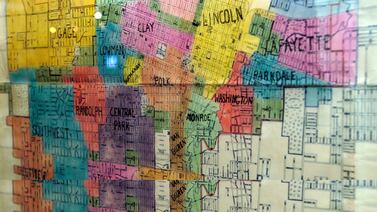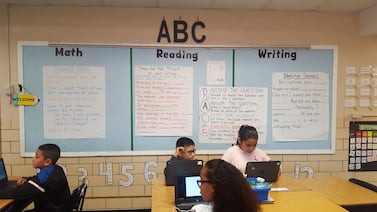New York City education leaders are preparing to reveal a new policy for how students will be graded while school buildings are closed during the coronavirus pandemic.
But parent leaders and other advocates are already pushing back, saying the policy under consideration, which continues with letter grades in high school, does not go far enough to address the challenges posed by an unprecedented public health crisis.
It’s expected that the city will announce that no student will be held back as a result of the pandemic. Elementary and middle school students’ work will be graded as “satisfactory” or “needs improvement,” according to details from the forthcoming policy, reported first by NY1.
High school students, meanwhile, will continue to receive grades in accordance with their school’s own policies — with one notable exception: No student will be given a failing mark. Instead, they will receive an “incomplete,” according to the report.
The education department would not confirm the outlines of the policy. Advocates, meanwhile, said they are still hoping the city will reconsider.
“To adhere to traditional grading at this moment would only serve to perpetuate the real impacts of pandemic-related stress, racial and economic disparities, and the fact that most teachers were not and still are not adequately prepared to provide high-quality instruction remotely,” states one letter, signed by three dozen parent leaders and scores of other advocacy groups.
The question of how to grade students is particularly fraught in New York City, where an unusually high share of middle and high schools admit students based on their academic performance. The most competitive schools use grades and test scores in enrollment decisions, a complicated and often hazy process that many blame for driving the city’s status as among the most segregated school systems in the nation.
The pandemic led New York City to shutter all of its school buildings, forcing more than 1 million students to learn remotely since March 23. Campuses are not expected to reopen this academic year, meaning about a third of 2019-20 school year will have taken place outside of the classroom.
More than 70% of public school students come from low-income families, and more than 300,000 lacked the electronic devices they needed for online classes immediately after campuses were closed. At the same time, students of color and those living in poverty are more likely to suffer from the health and economic repercussions of the pandemic, with death rates and unemployment much higher in those communities.
In a letter signed by the New York Immigration Coalition and dozens of other immigrant rights groups, advocates noted that students classified as learning English as a new language and those with disabilities are at a particular disadvantage.
“Many immigrant parents did not receive access to technology or instructional packets for weeks, and some have yet to receive these supports which are necessary for having a chance at engaging in remote learning,” the letter reads.
Those stark inequities prompted cries from parent leaders, advocacy groups, and teachers to rethink grading policies with a recognition that many students are dealing with trauma or may lack the resources they need to learn at home. Though the education department has pledged to provide devices to every student who needs one, tens of thousands are still waiting to receive a device.
Teachers have been expected to shift to an entirely new model for instruction with barely a moment’s notice, relying on virtual tools to stand in for the classroom. Families, meanwhile, are struggling to log on and keep up.
“No one’s considering what we’re going through,” said Grisel Cardona, a mother of three who is a member of multiple organizations pushing the city to take more dramatic steps. “We have children and families who have lost parents, so they might not feel like logging into Google classroom. And you’re going to give that child an incomplete? It’s just not fair.”
Among the advocates’ asks: the elimination of grades in elementary school, in favor of narrative reports about each students’ academic progress. In middle and high school, they want students to be held harmless, with opportunities for their grades only to improve, not decline. Everyone should graduate from high school, they demanded.
New York City has lagged behind other large urban districts in coming up with a grading plan, and the system’s approach has departed from those cities in its instance that high school students should continue to receive regular grades.
Chicago instituted a “no harm” policy, only allowing a students’ marks to improve. In Denver, students have to opt-in to receive a letter grade. San Francisco has proposed simply giving every student an A.








